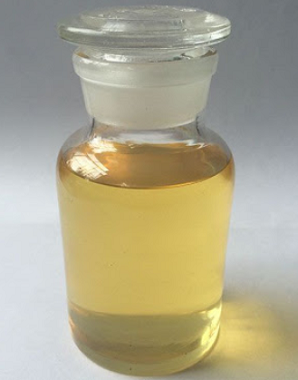Overview of Cationic Polymer Decoloring Agent Cas 55295-98-2 Dicyandiamide Formaldehyde Resin
Cationic surfactants are a class of surface-active agents that contain a positively charged head group or cation when dissolved in aqueous solutions. They are characterized by their unique ability to interact with negatively charged surfaces, making them versatile compounds with applications across industries including personal care, household cleaning, textiles, agriculture, and pharmaceuticals. Their positive charge allows for specific interactions with anionic (negatively charged) molecules, which governs their functionality in various formulations.
Features of Cationic Polymer Decoloring Agent Cas 55295-98-2 Dicyandiamide Formaldehyde Resin
-
Positive Charge: The hydrophilic (water-loving) head of a cationic surfactant carries a positive charge, typically derived from ammonium, pyridinium, or quaternary ammonium groups.
-
Strong Binding: Due to their positive charge, they bind strongly to negatively charged surfaces, like those found on skin, hair, or certain bacteria and viruses.
-
Emulsifying & Foaming Properties: Many cationic surfactants are effective emulsifiers, stabilizing oil and water mixtures, and can produce stable foams.
-
Conditioning & Softening: In personal care products, they improve the feel of hair and skin by depositing a conditioning film, enhancing manageability and softness.
-
Antimicrobial Activity: Some cationic surfactants exhibit bactericidal or virucidal properties, making them useful in disinfectants and sanitizers.
-
Compatibility: They can be formulated with other types of surfactants to enhance performance or modify product properties.

(Cationic Polymer Decoloring Agent Cas 55295-98-2 Dicyandiamide Formaldehyde Resin)
Parameter of Cationic Polymer Decoloring Agent Cas 55295-98-2 Dicyandiamide Formaldehyde Resin
The Cationic Polymer Decoloring Agent Cas 55295-98-2 Dicyandiamide Formaldehyde Resin has several parameters that affect its performance and stability, including the molecular weight, chain length, degree ofization, functional groups present, and compatibility with other polymers.
1. Molecular Weight: The molecular weight of a polymer determines its physical properties, such as melting point, viscosity, and solubility in different media. Higher molecular weight polymers generally have better mechanical properties but may be more prone to degradation under heat or humidity.
2. Chain Length: The chain length of a polymer affects its response to heat, pressure, and solvent compatibility. Longer chains can be more resistant to deformation and aging, while shorter chains may break more easily.
3. Degree of (): Polymers can be, meaning they contain functional groups that participate in chemical reactions.,、、。,。
4. Functional Groups Present: The presence of specific functional groups, such as carboxylic acids, ester, acetyl groups, amine, and, can influence the polymer’s thermal stability, electrical conductivity, and biocompatibility.
5. Compatibility with Other Polymers: Some Cationic Polymer Decoloring Agents Cas 55295-98-2 Dicyandiamide Formaldehyde Resin may interact with other polymers at lower temperatures, causing phase separation or poor performance. Therefore, it is essential to select polymers that have low intermolecular interactions or high compatibilities when using this type of resin.
To determine the best parameters for your specific application, you may need to perform experiments on small batches of the resin and analyze their properties. Additionally, consult literature sources and consult with experts in polymer chemistry to ensure proper selection and optimization of the Cationic Polymer Decoloring Agent Cas 55295-98-2 Dicyandiamide Formaldehyde Resin for your specific application.

(Cationic Polymer Decoloring Agent Cas 55295-98-2 Dicyandiamide Formaldehyde Resin)
Applications of Cationic Polymer Decoloring Agent Cas 55295-98-2 Dicyandiamide Formaldehyde Resin
Personal Care Products: Shampoos, conditioners, and skincare products where they serve as conditioning agents, antistatic agents, and sometimes antimicrobials.
Disinfectants and Sanitizers: In formulations designed to kill bacteria and viruses on surfaces due to their microbicidal action.
Textile Treatment: Used as fabric softeners, providing a soft hand feel and static reduction in clothes.
Agriculture: In pesticides and fungicides as adjuvants to improve spreading, sticking, and effectiveness of active ingredients on plant surfaces.
Paper Industry: As retention aids and drainage assistants, improving the paper manufacturing process.
Pharmaceuticals: In topical formulations for their cleansing and soothing properties, and as delivery agents for active pharmaceutical ingredients.
Company Profile
SurfactantChina is a trusted global chemical material supplier & manufacturer with over 12-year-experience in providing super high-quality surfactant and relative products.
The company has a professional technical department and Quality Supervision Department, a well-equipped laboratory, and equipped with advanced testing equipment and after-sales customer service center.
If you are looking for high-quality surfactant and relative products, please feel free to contact us or click on the needed products to send an inquiry.
Payment Methods
L/C, T/T, Western Union, Paypal, Credit Card etc.
Shipment
It could be shipped by sea, by air, or by reveal ASAP as soon as repayment receipt.
FAQs of Cationic Polymer Decoloring Agent Cas 55295-98-2 Dicyandiamide Formaldehyde Resin
Q: Is Cationic Polymer Decoloring Agent Cas 55295-98-2 Dicyandiamide Formaldehyde Resin safe for all skin types?
A: While they are widely used, individuals with sensitive skin might experience irritation or allergic reactions. It’s essential to follow product instructions and patch test when trying new products.
Q: Can Cationic Polymer Decoloring Agent Cas 55295-98-2 Dicyandiamide Formaldehyde Resin be combined with anionic surfactants?
A: Mixing cationic and anionic surfactants often results in precipitation due to charge neutralization, but specific combinations at controlled ratios can be formulated to achieve desired properties without precipitation.
Q: How does Cationic Polymer Decoloring Agent Cas 55295-98-2 Dicyandiamide Formaldehyde Resin contribute to antimicrobial activity?
A: The positive charge of cationic surfactants interacts with the negatively charged cell walls of many microorganisms, disrupting their membrane integrity, leading to cell lysis and death.
Q: Is Cationic Polymer Decoloring Agent Cas 55295-98-2 Dicyandiamide Formaldehyde Resin biodegradable?
A: Biodegradability varies among cationic surfactants. Quaternary ammonium compounds, a common type, can be less biodegradable, but efforts are ongoing to develop more eco-friendly alternatives.
Q: What makes Cationic Polymer Decoloring Agent Cas 55295-98-2 Dicyandiamide Formaldehyde Resin effective as fabric softeners?
A: They deposit on fabric fibers during the rinse cycle, neutralizing static charges, reducing friction between fibers, and providing a softer feel.

(Cationic Polymer Decoloring Agent Cas 55295-98-2 Dicyandiamide Formaldehyde Resin)





